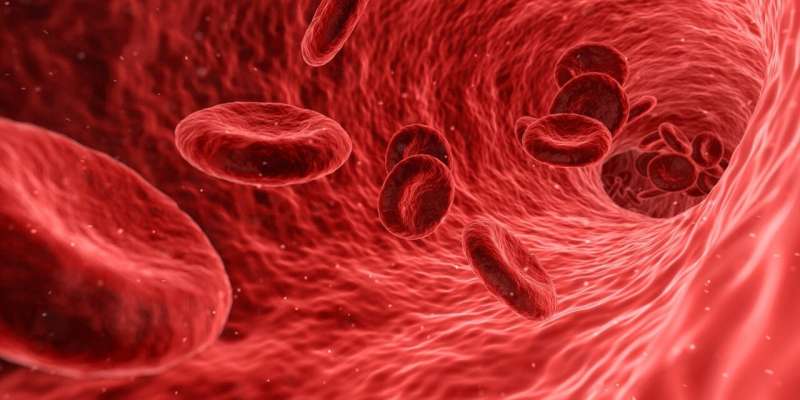Lessons from a shape-shifting blood protein


A study by researchers at the Interuniversity Institute of Bioinformatics in Brussels, the Structural Biology research group at Vrije Universiteit Brussel, and IBiTech–BioMMedA Group of Ghent University reveals how a key blood protein involved in inflammation and cancer—alpha-1-acid glycoprotein (AGP)—behaves in complex and surprising ways. The findings illustrate the limits of even the most powerful AI tools in understanding these dynamic biological processes.
Dr. Bhawna Dixit performed the research as part of her doctoral dissertation. She focused on AGP because it is abundant in human blood plasma and known for its role in regulating immune responses and its interaction with drugs.
Despite decades of research, its full behavior remained a mystery, mainly because the protein is heavily glycosylated, meaning it has complex sugar molecules (called glycans) attached to specific sites. These glycans are highly dynamic and variable, adding significant complexity to its structure.
Using molecular simulations, Dr. Dixit and her colleagues showed that even small genetic mutations in AGP, some of which are found in cancer patients, can drastically change how the protein moves and interacts with drugs. These effects become even more complex when factoring in the presence or absence of specific glycans, which shift based on the body’s disease or inflammation state.
“One tiny change in the protein, especially near its glycosylation sites, could completely reshape how it behaves,” said Dixit. “This has real implications for how precision medicine works for different people.”
In a follow-up study published in the Journal of Molecular Biology, the researchers evaluated whether AlphaFold, a high-profile AI system known for predicting protein structures, could capture the flexible and dynamic nature across a diverse set of proteins.
While AlphaFold performed well for the rigid parts of proteins, it struggled to model flexible and dynamic regions accurately. The team compared AlphaFold’s predictions with experimental data from NMR spectroscopy and found that the AI oversimplifies the representation of the protein’s flexible regions.
“AlphaFold is trained on static representations of protein structures, but many proteins, including AGP, are anything but static,” Dixit explained.
“We need to be cautious about interpreting AI predictions at face value, especially for proteins where flexibility and dynamic behavior are biologically significant.”
Their results underscore a growing concern in computational biology: while AI tools like AlphaFold are powerful, their training data lacks information about complex protein behavior, and results must be validated against experimental data—particularly for proteins involved in disease processes from real world biology.
As AI continues to shape biomedical research, the human element, critical thinking and hands-on experimentation, remains just as essential.
More information:
Jose Gavalda-Garcia et al, Gradations in protein dynamics captured by experimental NMR are not well represented by AlphaFold2 models and other computational metrics, Journal of Molecular Biology (2024). DOI: 10.1016/j.jmb.2024.168900
An interactive website showcasing the comparative results is available at https://bio2byte.be/af_nmr_nma.
Citation:
AI still struggles with proteins: Lessons from a shape-shifting blood protein (2025, May 26)
retrieved 26 May 2025
from https://phys.org/news/2025-05-ai-struggles-proteins-lessons-shifting.html
This document is subject to copyright. Apart from any fair dealing for the purpose of private study or research, no
part may be reproduced without the written permission. The content is provided for information purposes only.
If you liked the article, do not forget to share it with your friends. Follow us on Google News too, click on the star and choose us from your favorites.
If you want to read more Like this articles, you can visit our Science category.